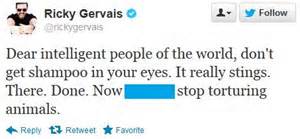If I asked you to pick out 5 household appliances or cosmetics around your home, I guarantee you every single one of them was tested on some type of animal. Rats, Monkeys, Dogs and Mice are some of the many animals used for experimentation for laundry detergents, bleach, shampoos etc. Test animals are captured from their natural habitat and brought to laboratories around the world to be used as test dummies for terrifying and painful procedures.
According to Humane Society International, animals are subjected to force feeding, inhalation, food and water deprivation, prolonged periods of physical restraint, burns, wounds to study healing, and pain infliction. They are also killed by carbon dioxide suffocation, neck breaking, and decapitation. In order to test irritation in the eye, cosmetic companies use rabbits and hold their eyelids open for multiple days while shampoos and conditioners are inserted in their eyes. (http://animal-testing.procon.org/).
I find many products troubling to understand considering the vast difference in human and animal anatomy. According to neurologist Aysha Akhtar, promising drugs that may be the cure to solve human suffering constantly get shelved because they are proved ineffective on animals, which isn’t always the case for human beings. Considering how expensive animal research can be, I don’t think citizens would be pleased in government research dollars being funneled into ineffective experiments if they were more aware of the realities of animal testing
You don’t need to watch more then 1 minute of the video above to see what the issues are with these practices. Although, animal research is highly regulated, the Animal Welfare Act does not cover rats, mice, fish and birds which is almost 95% of the animals that are used in experiments. In 2010, the AWA covered just over 1 million testing animals, which left around 25 million other animals not covered under their act and exposed to mistreatment and abuse (http://animal-testing.procon.org/).
However there may be hope for exposure and education amongst society thanks to social media. After conducting a study asking people if animal testing is morally wrong, ScienceShot stated that they saw a 23 % increase from 2001-2013 in positive responses. They suggest that the emergence of the internet and animal welfare organizations having a strong presence on social media has changed individuals thinking. (http://goo.gl/Ml8DwN).
References
http://animal-testing.procon.org/
http://www.peta.org/issues/animals-used-for-experimentation/animal-testing-bad-science/
